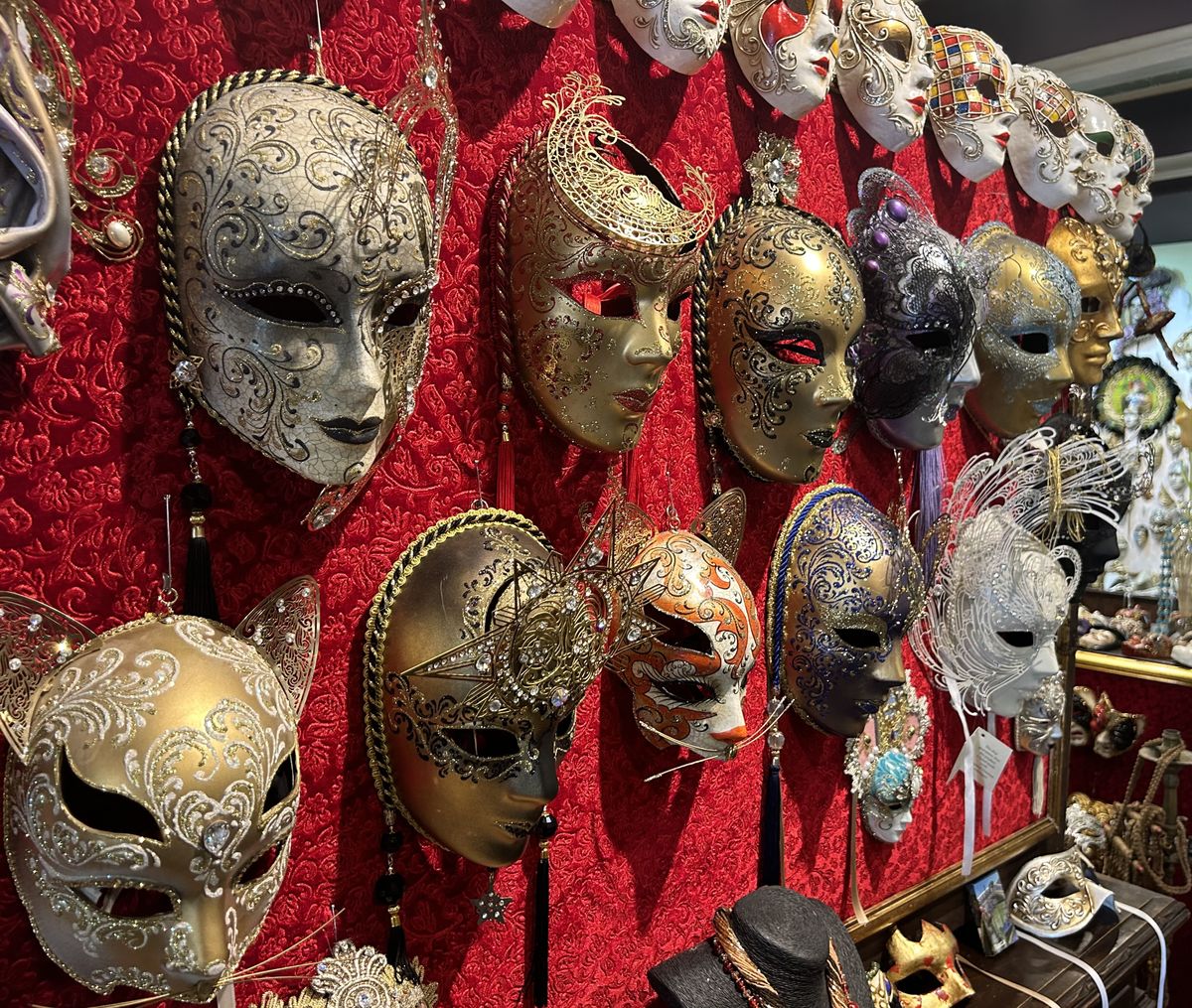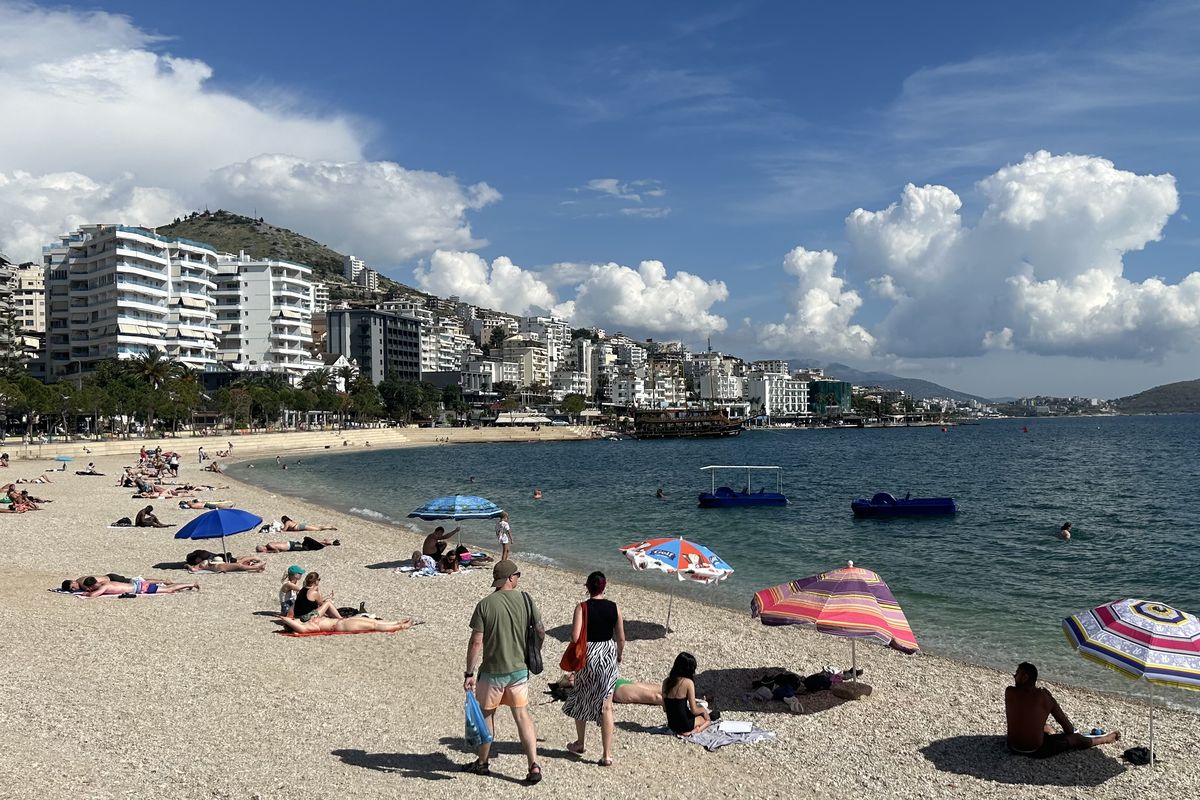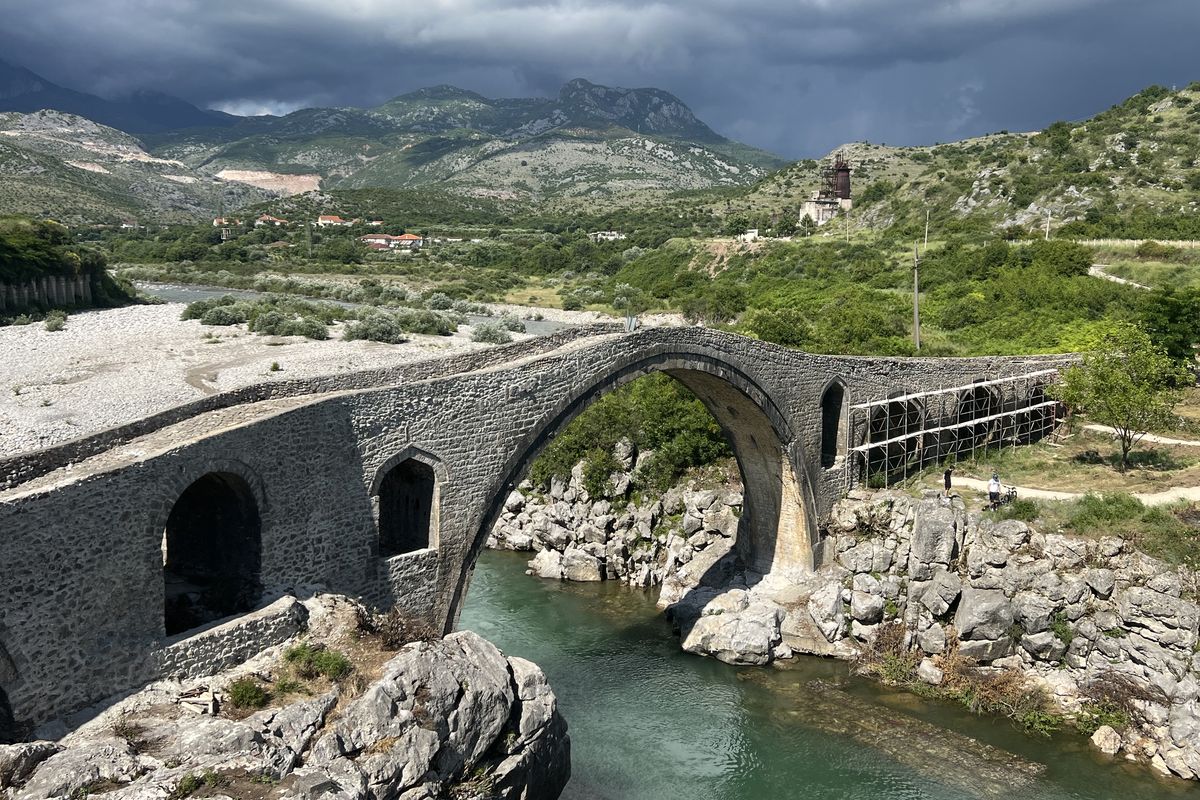Albania: Europe’s last, best undiscovered travel treasure
The beach at Sarandë, a town that sits on Albania’s southern coast fronting the Ionian Sea. (Dan Webster/For The Spokesman-Review)
It was while sipping the tasty goose soup he’d ordered that my friend Matt said he was considering giving up his American citizenship.
“I want to move to Albania,” he said. “I love Albania.”
He was kidding, of course. But only about the citizenship part. At least I think he was.
Whatever the case, Matt, his wife Ann, my wife and, yes, even I are dead serious about our affection for a country that hardly anyone I know has even dreamed of visiting – a country, too, that most people would have trouble finding on a map.
Located on the Ionian Sea, directly east of Italy and just north of Greece, Albania is a once-lost part of the area known collectively as the Balkans. I say once-lost because for much of the second half the 20th century, Albania – thanks to its former Communist government – was closed off from the rest of the world.
That self-imposed exile ended in 1991 when the country, caught up in the collapse of the former Soviet Union, transformed to a parliamentary system of government. In 1998, Albanians ratified a constitution that turned their government into a democracy.
And while Albania has endured the usual crises and growing pains expected of any emerging democracy, it’s gradually developed into a desired tourist destination. This is true, at least, for other Europeans – especially those from the United Kingdom.
We had first considered visiting Albania in 2006 when my wife accepted a volunteer position teaching law at a university in Kosovo, which is located just northeast of Albania. We spent the better part of six weeks in Pristina, Kosovo’s capital, making friends with a number of people of Albanian ethnicity. Mary Pat explored flying to Albania’s capital, Tirana, but she could never make her schedule work.
So, fast-forward 18 years and, following our attendance at the 60th anniversary festivities for Gonzaga University’s Florence program, the time for an Albanian holiday finally seemed right.
We flew from Florence to Rome and then on to Tirana, Albania’s capital city, arriving close to midnight. While cabbing to our hotel in the city center, we couldn’t see much. The next morning when we emerged into the daylight, we were surprised to see just how picturesque Tirana is. Tree-shrouded streets feed off the city’s main thoroughfares, especially the one with a name, Dëshmorët e Kombit Boulevard, which translates into English as “Boulevard of the Martyrs of the Nation.”
Being a former communist stronghold, Tirana would seem to be a place that should be marked by stark, Soviet-era architecture. But at least in its center the city is composed of blocks and blocks of, yes, weathered buildings but also those same tree-lined streets. And each of them features displays of public art and statues of prominent figures (some sporting graffiti) but also fronting shops, cafes and restaurants full of people eating, drinking, chatting and smoking cigarettes. (Yes, people in the Balkans still smoke in public.)
We had just a couple of days to enjoy Tirana before Ann and Matt flew in to join us. So we saw only a few of the city’s sights, including its famous Pyramid (once a museum, formerly a NATO headquarters and now a privately owned technology center), Skanderberg Square (the largest such plaza in the Balkans and named after one of Albania’s historical heroes) and Mother Theresa Square (named after the Albanian-born, Nobel Peace Prize-winning Catholic nun).
We would have enjoyed visiting the city’s National Historical Museum as well, but despite what we were told in the Bradt Travel Guide, the museum was closed – damaged, we were told, by a recent earthquake – and would be for the next four years. We recovered from our disappointment by touring Bunk’Art 2, one of two such museum/art installations in the city center. Both are meant to represent the estimated 750,000 smaller bunkers that, thanks to communist paranoia, were ordered built and which still exist throughout the country.
Tirana, though, was just the start of our trip. Albania has no working train service, and we were advised not to rent a car because the traffic was so bad. So, fearing that we would face difficulties traveling through Albania by bus, we opted to hire a private driver. And it was an inspired choice. Martin Mustafa runs his own company, Eden Rent & Tours, and he ended up shepherding us through the full length of the country over most of the next seven days.
From Tirana we traveled north to the city of Shkodër, a scenic spot set next to a lake that it shares with another Balkan country, Montenegro. Then Martin, being busy, roped his cousin Edwin into driving us far to Albania’s south, where we booked rooms in the beach town of Vlorë. From Vlorë we again met up with Martin, with whom we drove even farther south, along what he called the “Albanian Riviera,” to yet another beach town, Sarandë. And then finally back to Tirana.
A tour-guide rather than a standard for-hire driver, Martin proved to be a fount of knowledge about his native country’s history and culture, not to mention food and drink. Fluent in English, as were most Albanians we met, he proved just how expansive his knowledge was during the first leg of our journey, which took us from Tirana to Shkodër. At one point he said, randomly, “John Belushi is Albanian.” Score one for a trivia contest.
It seems as if we were living luxuriously, yet the prices in Albania make it one of the world’s last great bargains. The Marriott in Tirana is a first-rate hotel. Our residence in Shkodër was the Hotel Tradita Geg & Tok, which was built in 1694 and is famous for being the former home of the Albanian poet Filip Shiroka. In Vlorë we stayed at the Priam Luxury Resort, and in Sarandë we found sanctuary at the boutique hotel Da Luz, which served tasty home-made pastries during our breakfasts and equipped each of our rooms with a private hot tub. Yet we paid less than half per night for our lodging than we would in your average Seattle hotel.
Then there were the sights we saw. The Rozafa Castle in Shkodër, for example, which sits overlooking the city and surrounding area. With Martin having returned to Tirana, we hired a local cab driver who took us as close as he could drive to the former fortress itself, leaving us to climb the last several hundred feet up a steep, slippery stone path. But it was worth it, seeing the view both of the city and across the lake to the green mountains of Montenegro.
That was hardly all that Shkodër had to offer us. During a late-evening walk through the city center, past the city’s famously scenic Ebu Beker Mosque, we sampled gelato (served by the only rude Albanian we met on the entire trip). Earlier, we had convinced the cabbie to show us around, which how we got to see two of the area’s popular attractions.
The first, the Mesi Bridge, was built around 1770 and is now used mostly as a tourist must-see. The second was Shkodër’s Venice Mask Factory, which bills itself as a taste of Venice, Italy, with its hand-painted collection of masks, all of which we learned about during a private tour.
Vlorë provided us the opportunity to relax, especially since some of us were still feeling fatigued from the bane of all international travelers, jet lag. At that point, lounging in the sun for a lazy afternoon was just the break that we needed.
It was a couple of days later while on the road to Sarandë, though, that things picked up again. At one point, as we climbed up the road that wound through the coastal mountain range, Martin asked us, “Are you ready for a wow?” And then he showed us the stunning vistas that the “Albanian Riviera” offers.
A second “wow” came when he dropped us off at another castle, this one called Porto Palermo Castle and named after the bay that sits far below. A well-defended fortress, it was built in the early 19th century by the Ottoman governor Ali Pasha who ruthlessly ruled much of what is now modern Albania (and who eventually came to a bad end). Now renovated, the castle affords visitors yet another spectacular view of the sea.
Sarandë itself boasts a beach-side boardwalk that is perfect for what the Italians would call a late afternoon or evening passeggiata (or stroll). Even more impressive, though, is the nearby Butrint National Archaeological Park, a nearly 2,300-acre area that has been used by various groups since well before recorded history. Set amid a natural woodland, the park – which was deemed a UNESCO World Heritage Site in 1992 – comprises a range of features from a Roman theater, a great basilica and two castles.
But Martin would have a couple of more treats for us, one of which was a morning visit to what the Albanians call the Blue Eye. Located just outside the village of Muzinë, the source of the Bistricë River contains a spot that is imbued with the deepest shade of blue that you can imagine. Then that afternoon, he drove us to yet another castle, this one the massive Gjirokastër Fortress that looms above the town – another UNESCO World Heritage Site – of the same name.
Travel should be about more than simply seeing sights, though. And we enjoyed a number of them, including a number of amazing food experiences.
In Tirana, we ate not once but twice at the restaurant Era Vila, a highly rated place just a short walk from our hotel that serves a range of dishes of both international and traditional Albanian fare. (The final bill for a five-course meal with wine for four people: Less than $100.) On the way to Shkodër, we stopped for a late lunch at the agrotourism farm/winery Mriz I Zanave, where we toured the cheese factory and ate another several-course meal under a leafy arbor that shelters a dozen or more outdoor tables.
In Vlorë we were treated well at both at the restaurant at our resort and even better at the restaurant at the nearby Yacht Hotel, where we sat on a terrace that allowed us to eat and drink while watching the sunset.
And in Sarandë, we ate dinner at the Black Marlin – owned and run by a father and his three sons – where we enjoyed some of the best seafood of the entire trip. Even more impressive, though, was our lunch on the way home from Gjirokastër, at the Gryka e Këlcyrës Hotel, which sits in a Switzerland-like gorge that shelters what Martin calls “the last wild river in Europe.” He ordered for us, and the server brought a display of breads, baked cheeses and five plates full of roasted meats – including an actual sheep’s head.
Which brings me to a few last comments. As well as lodging, sights and food experiences, travel is marked by the moments that we remember. Ann, for instance, mostly recalls her afternoon walk – her passeggiata – along the Sarandë boardwalk. Mary Pat’s favorite moment came as we strolled through the archaeological park at Butrint.
I felt a sense of peace as we drove back from Gjirokastër, entranced by the stark gray mountains and green fields we passed while listening to Martin’s sound system play the Dire Straits song “Sultans of Swing.”
A high point for Matt, who is conversant in several languages, came at Shkodër’s Rozafa Castle. We were greeted by a gaggle of high-school-school-age students, one of whom called out – mistakenly but with a huge smile – “Hello, Germans!”
When Matt responded by speaking in Albanian, the kids gathered around him excitedly. After several minutes, when they departed with their teacher, the extroverted one shouted out, “I’ll never forget you.”
Just as the four of us will never forget Albania. Especially Matt, who insists that he wants to move there for good. Of course, he’s kidding.
Or is he?






